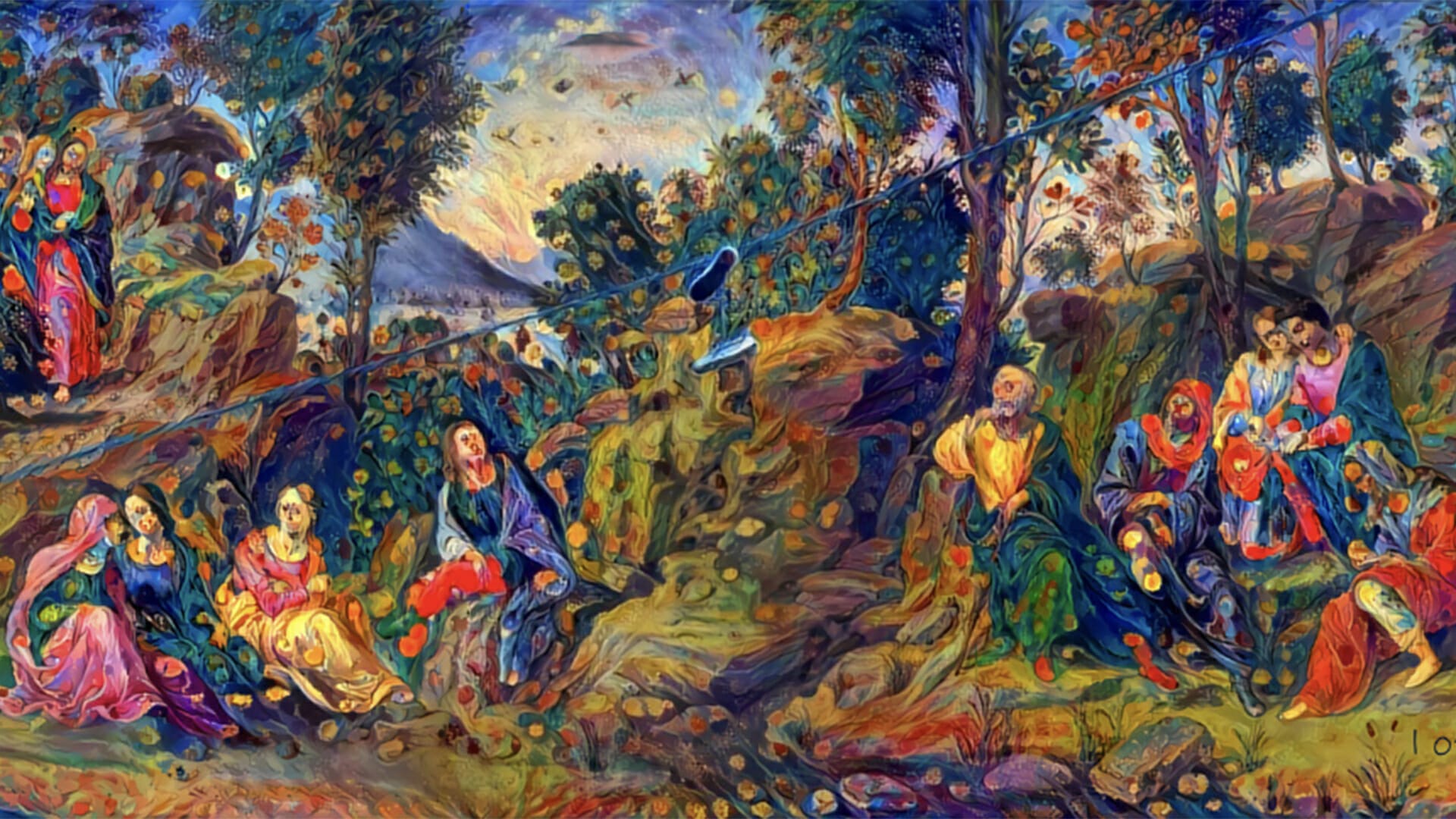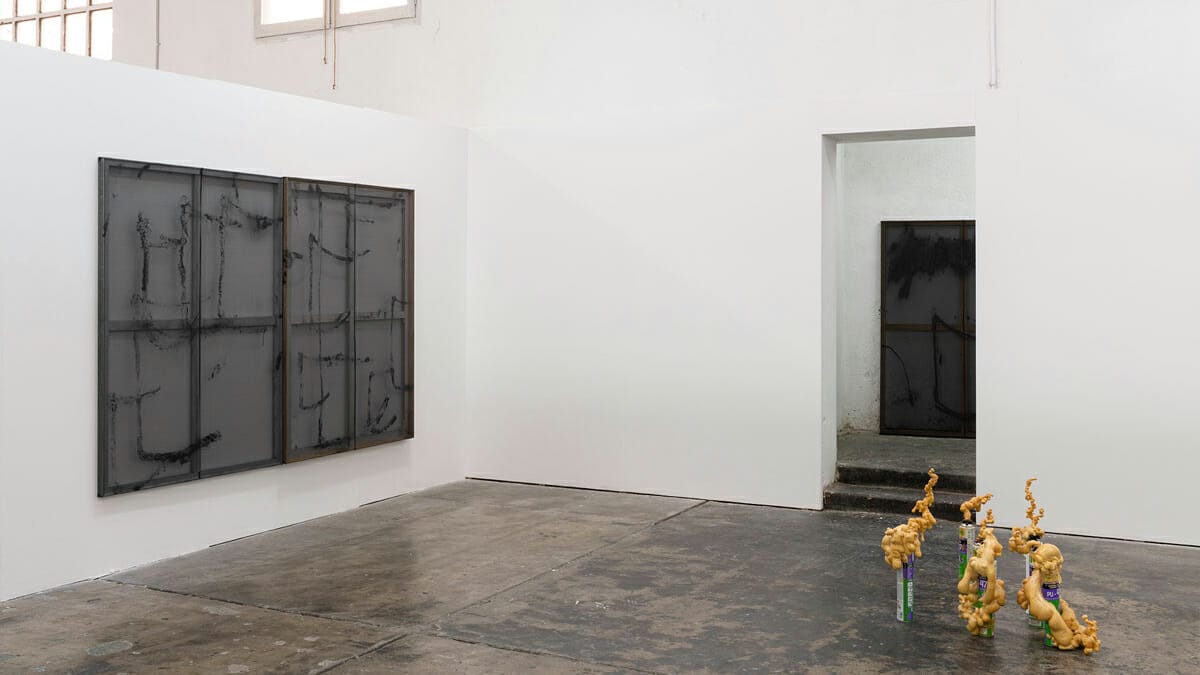
Fakewhale in conversation with Brennan Wojtyla
With LAN, Brennan Wojtyla transforms TICK TACK into an immersive installation that fuses gameplay, network infrastructure, and architecture, merging early 2000s LAN party culture with the concrete brutality of De Zonnewijzer. The exhibition moves fluidly between digital nostalgia and spatial manipulation, between participatory culture and infrastructural reflection. At FakeWhale, we spoke with Brennan to dive deeper into the concepts, motivations, and implications behind this radical intervention.


Fakewhale: Dear Brennan, With LAN, your project at TICK TACK seems to unfold as a single gesture where space, play, and community become an inseparable experience. What was the initial spark for LAN, and how did you decide to bring these seemingly disparate elements into dialogue?
The idea of doing a LAN party in a gallery/fine art context was something brought up as a joke between friends originally. In an attempt to make work more fun, the injection of video games into fine art spaces sat at the back of my to-do list for some time. But it wasn’t until TICK TACK introduced doing an eSports event that I started taking the idea “seriously.” The whole exhibition is a balance between manufactured and DIY elements. It was a careful dance of materials, staging, and conceptual decisions that took a long time to fully realize.
Your practice often navigates between found materials, industrial products, and digital tools. In LAN, this approach results in a stripped-back, almost militaristic functionality. How do you view “reduction” as both an aesthetic strategy and a critical act?
Reduction for me is a chance to show things that are typically hidden. Most aspects of the show are aggressively functional, featuring unprotected computers, exposed monitors, and cables on full display, with no additional elements added. By showing this stripped infrastructure, the focus shifts from the artist’s hand to the raw logic of systems, found and necessary aesthetics.


Starting from the brutalist architecture of De Zonnewijzer, you transformed the entire building into a network node and interactive sculpture. How did you engage with the physical space, and how did it shape the project’s conceptual and technical decisions?
I have been a massive fan of Brutalism for a long time, and it was such a pleasure to show in such an iconic building. I wanted to amplify the building’s architectural strengths.
A big inspiration for how you can occupy the space at TICK TACK was their previous exhibition Elektrosex with Michael Sailstorfer. I knew I wanted to utilize the atrium space so people would have a full view of the cables.
Having the CPU cluster on the top floor resulted in some unique problems to solve. One of which was the fact that the USB signal dies after 5 meters, meaning if we just used USB, the second desk in the back would not be able to use a mouse or keyboard. To solve this issue, we used passive USB > Ethernet and Ethernet > USB adapters. Such a weird and surprisingly functional solution, and now I have 20 of these funny dongles.
The reference to early 2000s LAN party culture is not just visual, but deeply experiential, people are playing, interacting, participating. What draws you to that specific digital era, and how have you reinterpreted it in today’s context?
4. The early 2000s LAN party culture was one of the last eras in tech that felt so DIY and tangible. Pre-iPhone, pre-5G, it feels so special to create your own intranet with a focus on having fun.
During the opening, I had a great conversation with the Belgian Esports Federation about the choices people have now. As high-speed internet infrastructure has spread pretty much everywhere, there is no logical reason to leave your house. Gaming and computer usage have become more and more isolating. But there is something so special about bringing community back into gaming, and having all of the facilities open to the public for free to use during the time of the exhibition gets rid of the barriers of entry to enjoy this feeling.
Since opening the show, there have been groups of gamers coming to have LAN parties at the exhibition, which is super super sweet.



In the 3D digital replica of the exhibition space, also accessible online, users can explore freely, and cause chaos. How interested are you in the idea of “losing control” over your work and turning it into a playable, modifiable environment?
The idea of control in artwork is a sensitive one in my studio practice. Typically, in the physical aspect of materiality or form is incredibly calculated and thought through, but once a work is put into the public sphere, I am incredibly hands-off. In the digital environment seen in the custom map gm_TICKTACK [the game server replication of TICK TACK], I wanted complete freedom. This is a continuation of opening up what participation in “fine art” contexts can look like. Giving a global public the option to choose a Peter Griffin player model, spawn a motorcycle, and do donuts inside a virtual replication of an IRL fine art space, I think, is a great thing that should be standard practice in the contemporary climate of art.
Infrastructure is at the core of LAN, cables, fans, motherboards, deconstructed and recomposed like sculptural elements. Can you walk us through how you conceive of infrastructure as an artistic language, beyond its technical function?
The infrastructure and industry are completely functional. The aesthetic is found in the objects’ purpose. It makes my job as an “artist” easier because the materials carry their own logic; I give up conceptual reasoning and opt for pure utilitarian choices. Its systems are doing what they’re designed to do. This is synonymous with the ideas of brutalism, and the exhibition takes the form of a sort of tech-brutalism.
Your work often pays close attention to industrial culture as a creative playground. Do you believe art still has the power to reclaim or subvert industrial codes, or is it more about reframing them through an aesthetic lens?
Most definitely. It is a huge privilege to work in the art world where you can so easily recontextualize industrial practices/infrastructure/materials into a place of contemplation and analysis. I don’t think it’s about subverting industrial codes; it is more about respecting industry and the people who work in these fields. I am more interested in illuminating everyday industrial practices and catering to the people who act in these fields. This show is more of a love letter to IT professionals than a catering to art critics.


Your DIY approach coexists with a deep reflection on networks and systems, open and closed. How do you balance the desire for participatory openness with the inherent structures of control that both art and technology often impose?
Like I said previously, there is a huge balancing act between manufactured and DIY elements on display. This also relates to the control and participation of the systems. I spent a lot of time locking down the CPUs. Modifying the operating system and modifying the game so it is impossible to use the computer for anything other than playing Counter-Strike. Once the player is given no other choice of playing, however they play and interact in the digital world is up to them. It is a great opportunity that the art world can give, which is openness. The art world is a special place where silly, unrealistic ideas can happen and be celebrated.
LAN also speaks to the threshold between online and offline, a topic that feels especially urgent today, between imagination and digital reality. In a world that is constantly connected, where do you position your work and your responsibility as an artist?
I feel like my work straddles the edge of both online and offline, and I try to shine a light on what is usually hidden or often overlooked. Simply by showing and focusing on this intersection, my goal is to develop people’s understanding of how systems can look and function, and to recognize the aesthetics embedded in their logic.
Looking beyond this exhibition, what future projects or territories are you interested in exploring? Will you continue to investigate the intersection of play, architecture, and networks?
I look forward very much to continuing this aspect of my practice. I think there is a huge amount to uncover socially and formally on how digital worlds and physical worlds can interact in the medium of LAN parties. Weaving with infrastructure and continuing to make site-dependent installations. I hope the exhibition can help propel new ideas about participation in exhibitions and how people engage with art.


fakewhale
Founded in 2021, Fakewhale advocates the digital art market's evolution. Viewing NFT technology as a container for art, and leveraging the expansive scope of digital culture, Fakewhale strives to shape a new ecosystem in which art and technology become the starting point, rather than the final destination.
You may also like
Community, Infinite Games, & Cryptoart
The C-word Community, community, community. Wtf even is community? From crypto to whatever the lates
FW Spotlight: Top Submissions of May 2025
Every so often, we find ourselves longing for a refuge, not a place, but an idea. A nest that keeps
11 QUESTIONS – Esther Miquel
Alejandro Javaloyas asks 11 questions to an abstract artist about their work and inspiration. Introd




